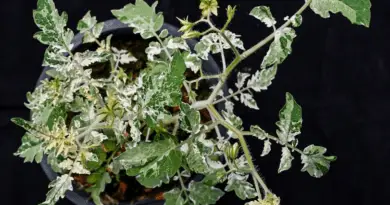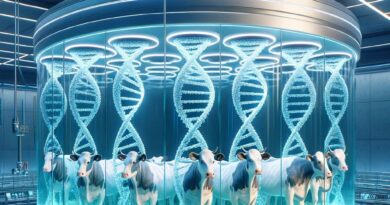Chiral Alcohol Synthesis: Bridging Nature and Engineering

An international team of researchers has discovered a new way to synthesize chiral alcohols using engineered virus-like particles (VLPs) as nanoreactors. This approach, detailed in a recent issue of Nanoscale Advances, could revolutionize the production of these vital compounds. It has significant implications for pharmaceuticals, fragrances, and sustainable chemistry.
Understanding Chiral Alcohols
Chiral alcohols are molecules that exist in two forms, known as enantiomers. These forms are mirror images of each other, much like left and right hands. This concept, called “handedness,” is crucial in chemistry. In the pharmaceutical industry, the two enantiomers of a chiral drug can have very different effects. One might be therapeutic, while the other could be inactive or even harmful. Therefore, producing pure enantiomers efficiently is a major goal in medicinal chemistry.
The Challenge with Traditional Synthesis
Traditional methods for making chiral alcohols often involve multiple steps and harsh chemicals. These processes can be costly and harmful to the environment. Consequently, there’s a need for greener and more efficient synthesis routes. Researchers have been exploring bio-catalysis and nano-engineering as promising alternatives.
Introducing Virus-Like Particles (VLPs)
Virus-like particles are nanoscale structures that resemble viruses but lack viral genetic material, so they are non-infectious. Their unique design allows them to hold enzymes and other molecules inside a confined space. This feature makes VLPs excellent candidates for use as nanoreactors, where they can facilitate chemical reactions with high precision.
The Breakthrough: Engineering VLP Nanoreactors
The research team used advanced protein engineering techniques to optimize VLPs for chiral alcohol synthesis. They modified the protein shells of VLPs to create nanoreactors capable of hosting multiple enzymes close together. This arrangement enhances the efficiency of enzymatic reactions by facilitating substrate channeling. In this process, intermediates are passed directly from one enzyme to another without diffusing away.
Key Innovations:
- Protein Shell Modification: Adjusting the VLP surface to improve stability and enzyme compatibility.
- Optimizing Enzyme Placement: Strategically positioning enzymes to maximize interaction and reaction rates.
- Enhancing Substrate Channeling: Reducing intermediate loss and side reactions for higher yield.
The Science Behind the Process
At the core of this innovation is a carefully orchestrated enzymatic sequence inside the VLPs. The team encapsulated a series of enzymes responsible for converting starting materials into chiral alcohols step by step. By engineering the interior of the VLPs, they created optimal conditions for these enzymes to work together efficiently.
Enzymatic Cascade Process:
- Substrate Introduction: The starting material enters the VLP nanoreactor.
- Sequential Conversion: Each enzyme modifies the substrate in a specific order.
- Product Formation: The final enzyme produces the desired chiral alcohol.
- Product Release: The chiral alcohol exits the VLP, ready for collection.
This method not only improves reaction efficiency but also minimizes the formation of unwanted by-products. As a result, the overall purity of the chiral alcohols produced is enhanced.
Advantages Over Traditional Methods
The VLP nanoreactor approach offers several significant benefits:
- Environmental Sustainability: It reduces the need for harsh chemicals and solvents, lowering the ecological footprint.
- Enhanced Efficiency: Higher reaction rates and yields are achieved due to optimized enzyme arrangements.
- Scalability: There is potential for large-scale production given the adaptability of VLPs.
- Versatility: The ability to engineer VLPs for different enzymatic reactions broadens their application scope.
Real-World Applications
Pharmaceuticals
Producing pure enantiomers of chiral alcohols efficiently can speed up drug development. Medications ranging from anti-inflammatories to antiviral agents could see improved effectiveness and safety profiles.
Fragrances and Flavors
Chiral compounds often have distinct scents and tastes. The refined production methods could lead to more vibrant and long-lasting fragrances. Similarly, they could enhance the natural and intense flavors in the food industry.
Green Chemistry
This technology aligns with the principles of green chemistry by reducing waste and energy consumption. Industries can adopt these methods to produce chemicals more sustainably, contributing to environmental conservation efforts.
Challenges and Future Directions
While this research marks a significant milestone, several challenges remain:
- Scalability: Transitioning from laboratory experiments to industrial-scale production requires overcoming engineering hurdles.
- Cost Efficiency: Ensuring that production costs are competitive with existing methods is crucial for commercial adoption.
- Regulatory Approval: For pharmaceutical applications, regulatory bodies will require extensive testing to validate the safety and efficacy of products synthesized using VLP nanoreactors.
Future Prospects:
- Expanding Enzyme Libraries: Incorporating a wider range of enzymes could enable the synthesis of diverse compounds.
- Customized Nanoreactors: Tailoring VLPs for specific reactions opens possibilities in personalized medicine and specialized chemical production.
- Collaborative Research: Interdisciplinary efforts combining biology, chemistry, and engineering will be key to overcoming current limitations.
As this technology advances, it holds the promise of transforming industries and contributing to a more sustainable future.
Reference
- Original Research Paper (Link to the Nanoscale Advances article)
Keywords
Chiral Alcohols, Virus-Like Particles, Nanoreactors, Enzyme Engineering, Biocatalysis, Green Chemistry, Protein Engineering, Pharmaceutical Synthesis, Sustainable Technology
Disclaimer: The information presented in this article is for educational purposes and reflects the findings as reported in the referenced research. For professional advice or detailed information, please consult the original research paper or a qualified expert.



